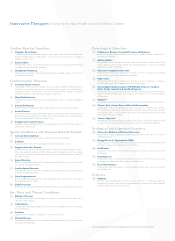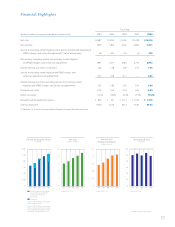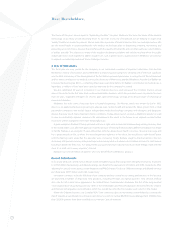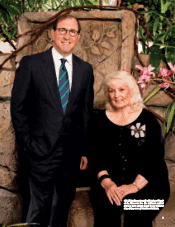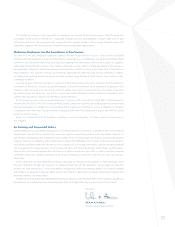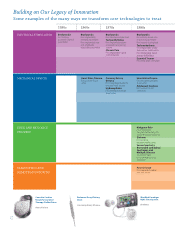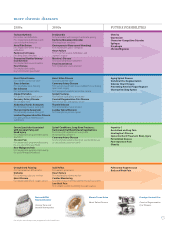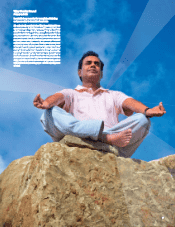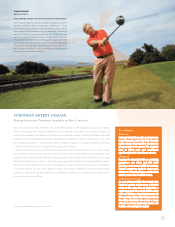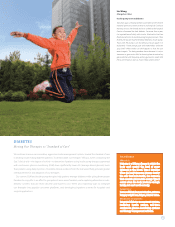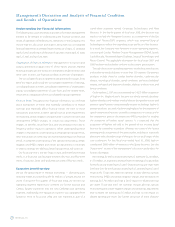Medtronic 2008 Annual Report Download - page 12
Download and view the complete annual report
Please find page 12 of the 2008 Medtronic annual report below. You can navigate through the pages in the report by either clicking on the pages listed below, or by using the keyword search tool below to find specific information within the annual report.
At a Glance
What it is:
Heart failure is a progressive deterioration of
the heart’s pumping ability, often because the
two lower chambers don’t beat in synchrony.
Symptoms:
Shortness of breath, swelling of feet and legs,
lack of energy, cough with phlegm.
Medtronic treatments:
Cardiac resynchronization therapy devices
(CRTs) that synchronize the beating of the
left and right heart chambers to optimize
pumping capability. They are often combined
with defibrillators (CRT-Ds), since one-fifth of
heart failure patients are also at risk for sudden
cardiac arrest.
Angelina Henderson
Richmond, Texas
Cardiac resynchronization therapy-defibrillator
(CRT-D) to treat congestive heart failure
During a layover, flight attendant Angelina Henderson was
surprised by a sudden fast heart rate. She went to see a heart
specialist, who diagnosed congestive heart failure and
prescribed a CRT-D. “I cried for a whole day,” Angelina said,
“but then decided to make the most of it.” She resumed speed
walking two weeks after her device was implanted, was back
at work in less than three months and has even taken her kids
on the roller coaster. “I’ve been blessed with a new life,”
Angelina added, “and I celebrate it every day.” Angelina also
focuses her renewed energy on helping others. She shares
her story with friends, coworkers and passengers, showing
them that people with heart conditions can also have full,
rewarding lives.
HEART FAILURE
Addressing Needs Across the Care Continuum
Heart failure affects more than 22 million people worldwide at a cost of $80 billion a year, so there is
tremendous need for our therapies—both to improve the quality of life for afflicted patients and to reduce
hospitalizations, which drive up cost. Yet our recent IMPROVE HF clinical study demonstrated that less than
half the eligible heart failure patients are receiving our life-changing Implantable Cardioverter Defibrillator (ICD)
and CRT-D devices, as indicated by current medical guidelines. To address the issue, we developed a quality
improvement process program. It helps physicians—especially referring cardiologists—identify heart failure
patients at risk for sudden cardiac arrest so they can be assessed and treated with a device, if appropriate.
We’re also building on our legacy of developing ever-more effective features to treat and manage
varying heart failure needs. We recently introduced Vision 3D. It’s a next-generation portfolio of devices
that incorporates the most advanced features from all our cardiac devices:
Automaticity—a device’s ability to self-adjust pacing—in three chambers of the heart,
Our PainFREE strategy for CRT-Ds and ICDs that first attempts to stop fast heartbeats through pacing
to avoid unnecessary shocks,
OptiVol Fluid Monitoring, which allows physicians to continually track patients’ intrathoracic fluid status,
and
Wireless connection to the Medtronic CareLink Network via our proprietary Conexus Wireless Telemetry
for easy physician monitoring.
8



